iOS开发基础知识--碎片7
三十八:各个版本IPHONE分辨率及图片的实现原理
desert@2x : iPhone 4s (320 x 420) desert-568h@2x : iPhones 5, 5C and 5S (320 x 568) desert-667h@2x : iPhone 6 (375 x 667) desert-736h@3x : iPhone 6+ (414 x 736) desert@2x~ipad : iPad (1024 x 768)
iPhone 4S Screen Size: 3.5 Inches Resolution: 640 x 960 (Half: 320 x 480)
iPhone 5 Screen Size: 4.0 Inches Resolution: 640 × 1136 (Half: 320 x 568)
iPhone 5S/5C Screen Size: 4.0 Inches Resolution: 640 x 1136 (Half: 320 x 568)
iPhone 6 Screen Size: 4.7 Inches Resolution: 750 x 1334 (Half: 375 x 667)
iPhone 6 Plus Screen Size: 5.5 Inches Resolution: 1242 x 2208 (1/3: 414 x 736) The size of iPhone 6 Plus is @3x scaling. So, it is divided by 3.

界面大小比例:
图片大小实现的原理:
#import <UIKit/UIKit.h>
typedef NS_ENUM(NSInteger, thisDeviceClass) {
thisDeviceClass_iPhone,
thisDeviceClass_iPhoneRetina,
thisDeviceClass_iPhone5,
thisDeviceClass_iPhone6,
thisDeviceClass_iPhone6plus,
// we can add new devices when we become aware of them
thisDeviceClass_iPad,
thisDeviceClass_iPadRetina,
thisDeviceClass_unknown
};
thisDeviceClass currentDeviceClass();
@interface UIImage (DeviceSpecificMedia)
+ (instancetype )imageForDeviceWithName:(NSString *)fileName;
@end
#import "UIImage+DeviceSpecificMedia.h"
thisDeviceClass currentDeviceClass() {
CGFloat greaterPixelDimension = (CGFloat) fmaxf(((float)[[UIScreen mainScreen]bounds].size.height),
((float)[[UIScreen mainScreen]bounds].size.width));
switch ((NSInteger)greaterPixelDimension) {
case 480:
return (( [[UIScreen mainScreen]scale] > 1.0) ? thisDeviceClass_iPhoneRetina : thisDeviceClass_iPhone );
break;
case 568:
return thisDeviceClass_iPhone5;
break;
case 667:
return thisDeviceClass_iPhone6;
break;
case 736:
return thisDeviceClass_iPhone6plus;
break;
case 1024:
return (( [[UIScreen mainScreen]scale] > 1.0) ? thisDeviceClass_iPadRetina : thisDeviceClass_iPad );
break;
default:
return thisDeviceClass_unknown;
break;
}
}
@implementation UIImage (deviceSpecificMedia)
+ (NSString *)magicSuffixForDevice
{
switch (currentDeviceClass()) {
case thisDeviceClass_iPhone:
return @"";
break;
case thisDeviceClass_iPhoneRetina:
return @"@2x";
break;
case thisDeviceClass_iPhone5:
return @"-568h@2x";
break;
case thisDeviceClass_iPhone6:
return @"-667h@2x"; //or some other arbitrary string..
break;
case thisDeviceClass_iPhone6plus:
return @"-736h@3x";
break;
case thisDeviceClass_iPad:
return @"~ipad";
break;
case thisDeviceClass_iPadRetina:
return @"~ipad@2x";
break;
case thisDeviceClass_unknown:
default:
return @"";
break;
}
}
+ (instancetype )imageForDeviceWithName:(NSString *)fileName
{
UIImage *result = nil;
NSString *nameWithSuffix = [fileName stringByAppendingString:[UIImage magicSuffixForDevice]];
result = [UIImage imageNamed:nameWithSuffix];
if (!result) {
result = [UIImage imageNamed:fileName];
}
return result;
}
@end
三十九:其它几张知识图片
1:NSObject继承类图

2:sqlite3返回含义
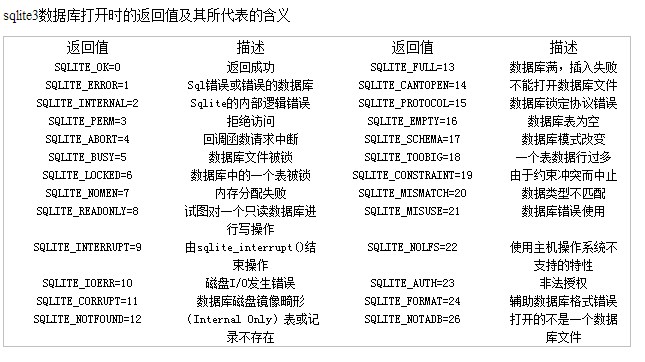
3:视图坐标说明
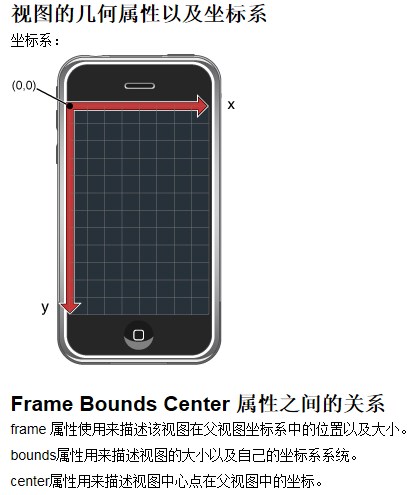
4:生命周期图
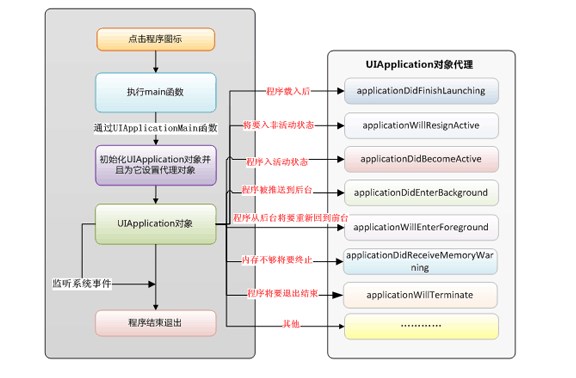
5:UI继承图
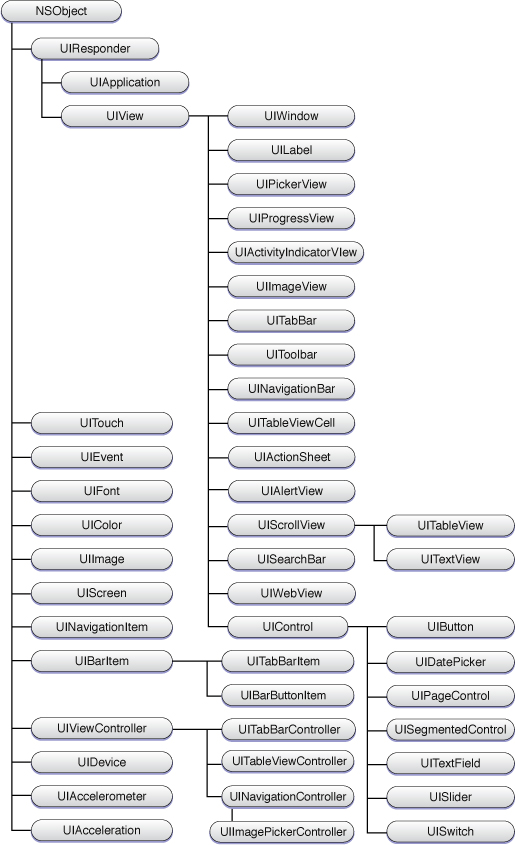
6:Segue列表跳转,关于selection跟Accessory的区别

7:IOS6与IOS7界页的差别
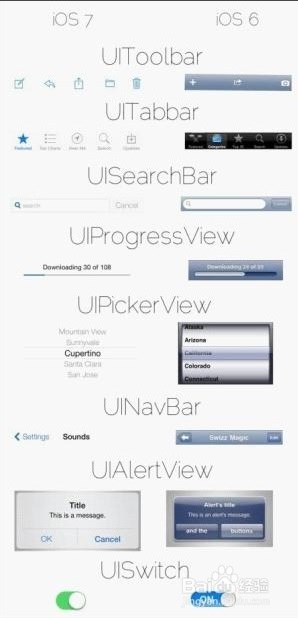
四十:为什么XCode项目中会有A M这种标识
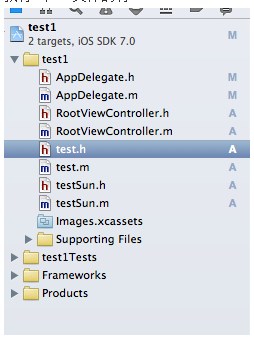
如果没装过svn,默认是本机 git管理。 M是表示改文件有改动,A是新增加的文件。目前是都没有提交到服务器状态,到source control 里点选commit 提交后就没这些了,下次再有改动或新增,还会出现该标记。
四十一:MAC 本地进行IP映射域名的操作
1.打开finder, 快捷键:shift+command+g 前往文件夹 “/etc”
2.找到hosts文件托到桌面修改,再把/etc下源文件删除,把桌面修改好的拖进/etc。
最后在终端:ping svnserver ,如果能ping通到192.168.1.51,说明映射成功
四十二:arm64 armv7 armv7s arm6
目前ios的指令集有以下几种: • armv6 ◦
iPhone ◦ iPhone2 ◦ iPhone3G ◦ 第一代和第二代iPod Touch • armv7
◦ iPhone4 ◦ iPhone4S • armv7s
◦ iPhone5 ◦ iPhone5C • arm64
◦ iPhone5S 机器对指令集的支持是向下兼容的,因此armv7的指令集是可以运行在iphone5S的,只是效率没那么高而已~ ================================================ Architecture : 指你想支持的指令集。 Valid architectures : 指即将编译的指令集。 Build Active Architecture Only : 只是否只编译当前适用的指令集。 ================================================ 现在是2014年初,其实4和4S的用户还是蛮多的,而iphone3之类的机器几乎没有了,所以我们的指令集最低必须基于armv7. 因此,Architecture的值选择:armv7 armv7s arm64 PS:选arm64时需要最低支持5.1.1:
四十三:真机测试报 TCWeiboSDK 93 duplicate symbols for architecture armv7
这是因为在项目中引用的两个相同的类库引起了,在我的项目中是因为引入的两个不同指令集引起的;
四十四:UINavigationBar的一些属性的行为发生了变化

self.navigationController.navigationBar.barTintColor = [UIColor blackColor];
self.navigationController.navigationBar.tintColor = [UIColor whiteColor];
[self.navigationController.navigationBar setTitleTextAttributes:@{NSForegroundColorAttributeName : [UIColor whiteColor]}];
self.navigationController.navigationBar.translucent = NO;




 浙公网安备 33010602011771号
浙公网安备 33010602011771号